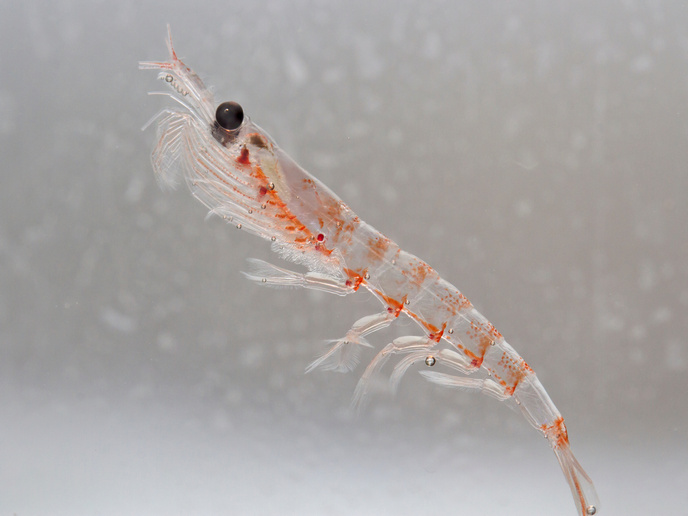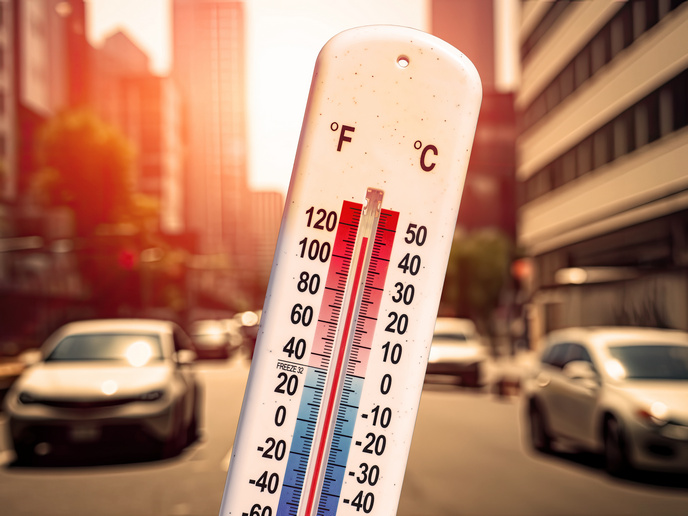Exploring the impact of parasites in Antarctic krill
The Antarctic krill is a tiny crustacean with an outsized impact on its ecosystem. It is one of the most abundant animals on the planet in terms of biomass, and is food for a wide variety of other organisms, including fish, mammals and birds. Krill also eat phytoplankton and excrete pellets rich in carbon and nutrients, giving them a critical role in the carbon cycle. Antarctic krill also have a surprisingly high prevalence and diversity of parasites, though the exact composition and impact of these relationships are unknown. “There is very little known about how often parasites infect zooplankton,” says Alison Cleary, Marie Sklodowska-Curie Actions global fellow at the British Antarctic Survey. “Some studies have found nearly every individual has parasites, other studies have looked at lots of zooplankton and not found a single one.” In the EU-funded ParaKrill project, Cleary’s team investigated the true abundance of parasites in krill to inform sustainable management strategies for this key Antarctic species. “Parasites aren’t included in most food web models for the Southern Ocean, so we were surprised to find 1 in 10 Antarctic krill contained parasites,” adds Cleary.
Investigating the reproduction, growth and metabolism of krill
The researchers looked at three important processes in krill which could be affected by parasites – reproduction, growth and metabolism. “We don’t understand enough about krill parasites to test these directly by intentionally infecting krill, so we looked at natural rates, and then used DNA sequencing to figure out which krill had parasites,” explains Cleary. To look at reproduction, the team put krill in an aquarium called the ‘krill hotel’, and then watched to see which krill laid eggs, and collected those eggs for further analyses. To look at growth, the researchers partnered with colleagues in Australia who had recently run growth experiments in krill. To assess metabolism, they put krill in special airtight aquariums and measured how much oxygen they used up.
Finding the impact of krill parasites
The results showed that krill which had parasites produced eggs that had fewer nutrients in them. “Baby krill don’t have mouths for the first couple of weeks after they hatch, so if they don’t have enough nutrients with them in the egg, they might starve before they are big enough to feed for themselves,” notes Cleary. This could have impacts across the food web, as it could affect how many krill grow up, and therefore the amount available as prey for penguins and whales. Krill with parasites also grew slower, which could have similar impacts on their predators – including fishermen.
Collaboration and future work
Collaboration with Australia was essential to this project, says Cleary, especially for assistance with fieldwork in Antarctica, which is both complicated and expensive. “The Australian collaborator’s work on the growth experiments made that component of our project possible,” she explains. The team hopes the results will be used to inform krill management, a complex process managed by international consensus, by highlighting the importance of parasites and encouraging their inclusion in food web models which guide management decisions. The researchers plan to build on various aspects of this work if they can secure funding, including how a changing environment may affect the spread of parasite infections in krill and other zooplankton.
Keywords
ParaKrill, krill, Antarctic, food web, parasites, reproduction, growth, metabolism, management







